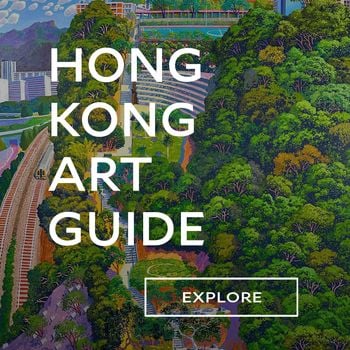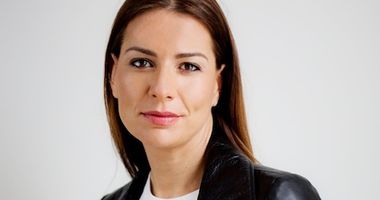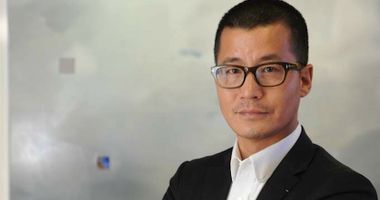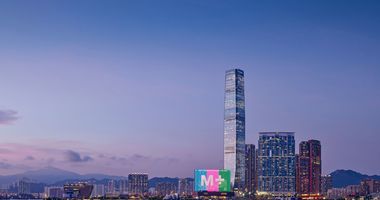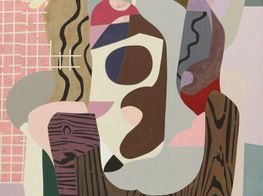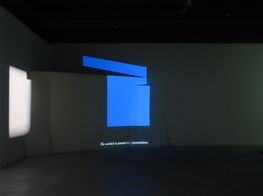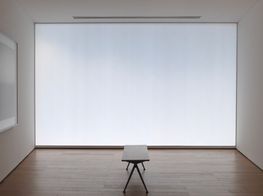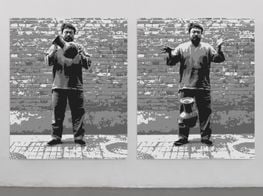Alan Lo
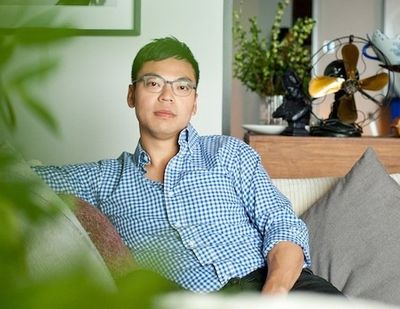
Active in promoting art and design in Hong Kong, Alan Lo is the Chairman of Hong Kong Ambassadors of Design, sits on the Hong Kong Arts Development Council, and was a member of Art HK's advisory group.
Lo is also a co-founder and director of Hong Kong-based Press Room Group, owner and operator of various well-known restaurants and cafes in Hong Kong, including The Press Room and Classified. The Group's newest venture, Duddell's, combines art and dining and aims to be a social hub for those with an active appreciation for art.
A two storey restaurant and club spanning 10,000 square feet, Duddell's displays contemporary art exhibitions upstairs and Chinese 20th Century works from the MK Lau Collection downstairs.
The inaugural contemporary exhibition presented a selection of portraiture that (appropriately for the space), evoked the history of dining rooms and clubs and included works by Pieter Hugo, Hiroshi Sugimoto, Rodney Graham, George Condo and Yan Xing, and Ai Wei Wei will curate Duddell's next exhibition. Anna Dickie met Alan Lo at Duddell's to talk with him about how a restaurant space can be an art space and to discuss his passion for art and design.
ADTell me about how the concept for Duddell's developed?
ALIn the last five years there has been a drastic shift in the art community and culture in Hong Kong. This has been created in part by M+, Art Basel (previously Art HK) and the influx of big international galleries. I felt that at some point Hong Kong would be ready to have a space where the likes of collectors, curators, gallerists and auction houses—just about anyone who has an interest in the arts—could convene.
Prior to Duddell's there really wasn't a place. The concept came to mind about three years back and it was really more of a thought and as you know with Hong Kong, space is difficult. I didn't think we would actually be able to pull something like this together. Then Shanghai Tang approached us with the space and when I saw it I knew right then we could do it.
ADTell me about how you select the art that's shown at Duddell's?
ALInvited curators curate the exhibitions. Curators we are working with include Amelia von Wedel, Pernilla Homes, Inti Guerrero, and Catherine Maudsley. Ai Wei Wei will curate our exhibition opening in October. The curators are given a wide mandate, which is to show excellent artwork sensitively curated. We also encourage a balance between international and local artists. Although we focus on Cantonese or Chinese cuisine here, the space and the audience are both local and very international. The art reflects this. We also encourage a balance between emerging and established artists.
ADThe Duddell's art program features talks, performances and film screenings. How do you structure this programme?
ALWe work with full time event art co-coordinators. It is a lot of work. We have an arts committee comprised of Yana Peel, William Zhao, Chrissy Sharp and myself. Many different people do approach us and we go back to this committee to decide what we are able to show. We have to make sure it's of a certain quality and diversity.
ADPlease tell me about the juxtaposition of the ink paintings downstairs versus the contemporary art upstairs at Duddell's?
ALIt's rare to see historical works and contemporary works in the same space. Rarely do they fall into the same conversation. In the current context, when there is a great deal of focus on contemporary art, it seems to me that people fail to make an attempt to explore the transition from this historical ink brush work to the contemporary art of today.
A good portion of the audience will not understand the ink brush works, but it is a good first introduction; and a timely one—it comes at an interesting time when there is this renewed discussion on the 'new ink', 'ink on paper works' or 'contemporary ink'. We hope we instigate a curiosity about this work.
ADIs that where your passion for art started, looking at ink painting?
ALWell I grew up in an environment looking at ink. My father has collected ink since the late 70s so I grew up looking at that. It took me awhile to understand the contemporary visual language. It was so different from anything I had ever seen. I suppose I have an appreciation for both, but in terms of buying and collecting, I am looking more on the contemporary side of things now.
ADDoes your early knowledge of ink influence the type of contemporary art you are drawn to?
ALYes, it does subconsciously. Ink is imbued with an emphasis on artistic technical merit—on apprenticeship and on technique. Contemporary art seems to me to be more based on making a statement or an expression of a concept. Contemporary art doesn't need to be beautiful. I still struggle a bit with this. I still look for that beauty and technical brilliance that I appreciate in ink painting. I would be interested to see a contemporary artist really explore the classical way of approaching art and deconstruct its tradition in some meaningful way. The discussion on contemporary ink is very popular right now— but I don't know if anyone has yet really been able to push the issue of tradition in contemporary art.
ADYou have an architectural background. How does that influence your interest in art and design?
ALIt definitely had an effect on me initially. In fact, the first artwork I bought was a sculpture. Sculpture and photography got me interested initially. I am not an architectural type person. I went through an architectural education but actually have never practiced. I knew at some point that I wasn't going to be a very good architect, I just didn't have the discipline. I shifted away from professional practice and into something that I really enjoy, but which is still closely related in someway to architecture and design. I have been very fortunate to work with some of the most talented designers and I'm learning a great deal from them. It has been an absolute pleasure.
ADIlse Crawford was the designer for Duddell's. How do you think Duddell's found its balance between being an art space and a dining space?
ALIt was about breaking down the 10,000 sq ft of space and kind of building some warmth and intimacy into it. With Ilse Crawford and her team we described it as a collectors home. We wanted it to feel like walking into someone's house and create a sense of history—with objects in the space that feel as though they have come from different facets of a life. You will see in the bookshelf books that have been donated. We didn't want coffee table books with no meaning. We wanted people to come in and pull them down and for these books to trigger conversations.
ADYou were on the advisory group for Art HK. How did you feel seeing Art HK become Basel Hong Kong?
ALArt HK was improving and growing year on year, so for me Art Basel is another chapter in that growth. Art Basel brings more of an international collecting base to Hong Kong—the whole VIP relations machine. It is definitely a good thing for Hong Kong, and will be interesting to see how they continue to attract collectors. What will Basel Hong Kong's point-of-difference be? Why will collectors come here in addition to visiting Basel Basel, Basel Miami, or Frieze New York? What will be so interesting about the Fair here?
ADWhat thoughts do you have on the art scene here in Hong Kong?
ALOn the trade side of things, so much has changed in Hong Kong in the last five or six years, but I personally only see a limited benefit to the local artists and creators. The community's ongoing efforts in supporting and nurturing all artists in the scene are important. It is also important to think about how you grow the Asia collector base. There are handfuls that have benefited from it, but there is so much more that needs to be done in order to really say that we have an interesting groundswell of art. It will take time. It is happening.
It is definitely beneficial to the local community to see a growing interest both regionally and internationally in Hong Kong artists. I was in Venice for the Biennale - and saw the international interest in Lee Kit and the Hong Kong pavilion—well I think it was the first time we have ever really been in the radar of the international arts circuit. It's definitely is a very good start.
I sit on the Hong Kong Arts Development Council—which is the government's principal funding body for arts related projects. On that front there is a great deal to be done. The money and resources are there, but it is about doing the right thing and having the right platform to nurture talent in this environment. There is a great deal of expectation for what M+ will do and the influence on the region, but there is still more to be done. M+ cannot do everything. We need the artists, the collectors, and the artist spaces.
ADYou are Chairman of Hong Kong Ambassadors of Design. Tell me about this organization?
ALIn 2006, Ambassadors of Design was begun as a non-profit organisation and we are still going. We want to encourage Hong Kong as a place for anyone, whether local or international, to do design projects. We have two major design events that we are organizing under the auspices of Detour, which is our annual design and cultural festival. We are looking for appropriate sites now. There has really been so much growth in this area. Detour has grown from something that was no more than a small book that was attached to one issue of Time Out to what is now—a fully fledged 5 million dollar project that attracts a huge amount of visitors over 2 .5 weeks.
We will continue to organise Detour every year, however, we are also looking at the feasibility of starting a foundation where we would be actively giving grants to individuals and organisation for the purpose of funding them to take something international to Hong Kong or take something from Hong Kong to be international. We want to act as a catalyst for really good projects, giving them funding, but not limiting them by government involvement. We have been doing a lot of research and having a lot of internal discussion. It's an exciting time. —[O]


